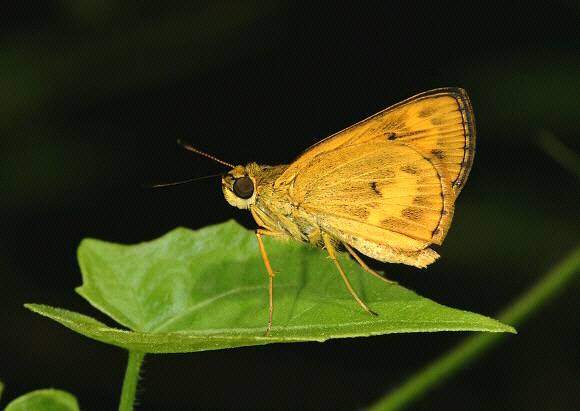
Introduction
The Hesperiinae are a vast subfamily, characterised by their wide heads, large eyes, thick bodies, and their habit of basking with their forewings held at a 45° angle, and hindwings held horizontally. There are about 400 Hesperiinae in the Oriental region, of which 8 are placed in the genus Oriens.
On the Indian subcontinent there are 4 Oriens species – gola, paragola, goloides and concinna.
Oriens gola is found from India and Sri Lanka to Thailand, Malaysia, Sumatra and Borneo.
Habitats
This species is found in sunny glades and clearings in secondary forest and plantations, and along roadsides, riverbanks and other sheltered grassy habitats at elevations between sea level and about 400m.
Lifecycle
The egg is dome-shaped, shiny and straw coloured. It is laid singly on the upperside of leaves of the foodplants.
The caterpillar is whitish dorsally, suffusing into pale green below the spiracles. The body segments are wrinkled vertically, and densely covered with tiny tubercles, giving the skin a rough texture. The head is pale yellowish-green, with a narrow black diagonal stripe across each cheek.
The foodplants are grasses, including Imperata and Paspalum ( Poaceae ).
The chrysalis is formed within a tube constructed from a rolled grass blade. It is a bright translucent green colour, with 3 thin white stripes along the back. The eyes protrude slightly, and a white spike projects from the head.
Adult behaviour
Both sexes can commonly be seen darting about in the sunshine in grassy habitats, often settling on low herbage to rest, usually keeping their wings held erect. In weak or hazy sunlight they bask in the characteristic Hesperiine posture.
